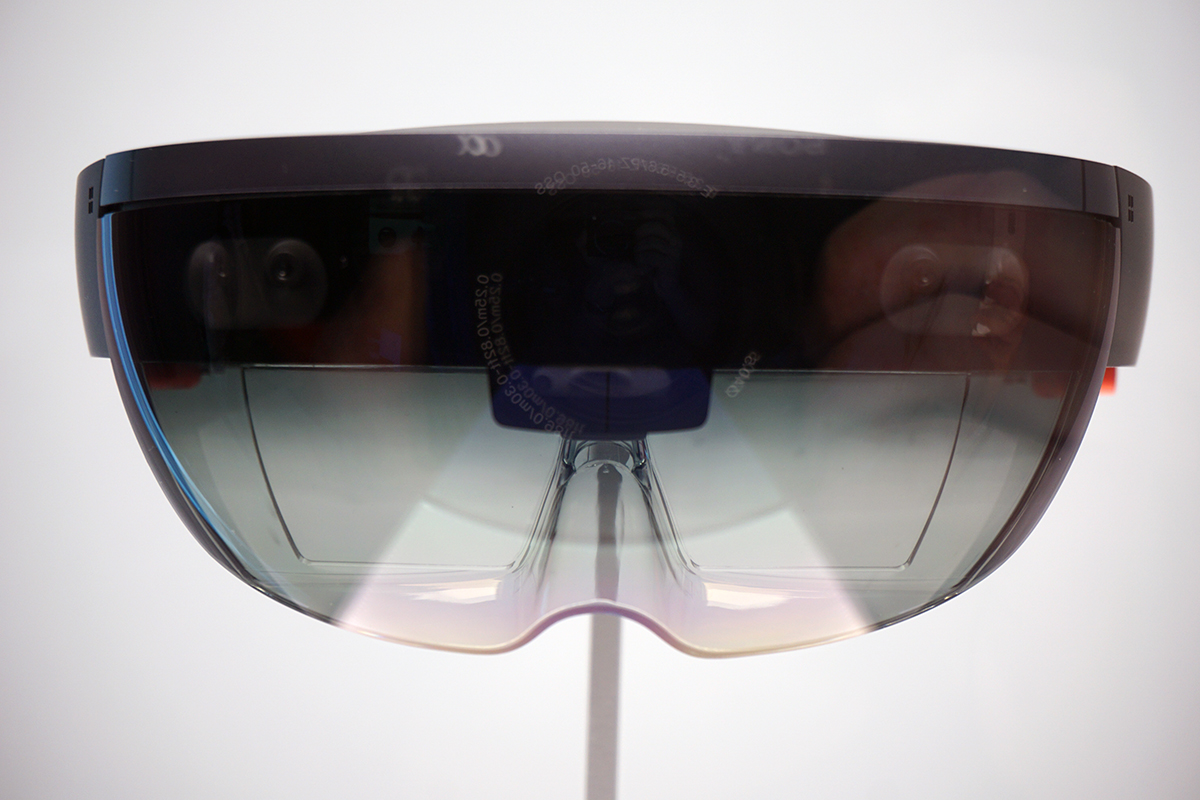Microsoft Seeking Research Proposals For Projects Using HoloLens
We've seen HoloLens used in an office environment at BUILD and as part of the Halo and Minecraft experiences at E3, but Microsoft wants to see if its augmented reality headset can also be used to help research efforts in an academic setting.
The so-called Academic Research Request for Proposals will award five universities or institutions with $100,000 each, as well as two HoloLens kits. Although the goal is to see how the device will help research of all types, the company is looking at how it will impact studies in a few specific areas.
Data visualizationExample: Using mixed reality to make large data sets easier to navigate and understandEvolution of pedagogy in STEM, medical, and design educationExample: Using existing 3D assets or new 3D assets for high-value training (e.g., interactive 3D models for medical training)Future of communication and distributed collaborationExamples: Remote training and support, first-responder emergency management, and virtual conferencesInteractive art and experimental mediaExamples: Narrative storytelling, new forms of artistic expression, interactive journalismPsychology-related topicsExamples: Human perception and human-computer interactionSolving difficult problems and contributing new insights that are specific to the applicant's field
In order to be considered for one of the five prizes, applicants (restricted to U.S. residents only) must submit a one- to three-page proposal paper by 11:30pm PDT on September 5, 2015. Information includes an abstract of the proposal as well as a detailed description, the approach to research, use of funds and an overall schedule of the entire project.
After submission, the application will be considered using a few criteria such as its overall impact in terms of scholarly papers and presentations, how feasible is the project for completion, and the overall qualifications of the main investigator.
Microsoft noted that the $100,000 funding will end after one year, as it is only meant to kickstart projects. Researchers should also look into finding multiple avenues of funding during and after Microsoft's investment.
The academic research is but one of the many paths that Microsoft will pursue to test the use of HoloLens. Last month, it collaborated with NASA for Project Sidekick, which would use two HoloLens devices in the International Space Station to enhance Skype communication with a NASA operator on Earth, as well as a standalone procedure that involves using its augmented reality software on top of real-world items in order to train astronauts while in the station.
Get Tom's Hardware's best news and in-depth reviews, straight to your inbox.
However, the devices never made it to the International Space Station, as the SpaceX shuttle carrying them exploded early in the flight.
We still haven't seen too much of HoloLens since its announcement, but Microsoft's probe into research capabilities is a sign that the company sees HoloLens as useful in areas of business, science, healthcare and even astronomy. It's not just another toy for the future, but a tool to help cure diseases and enable astronauts to communicate far away from home.
Follow Rexly Peñaflorida II @Heirdeux. Follow us @tomshardware, on Facebook and on Google+.
Rexly Peñaflorida is a freelance writer for Tom's Hardware covering topics such as computer hardware, video games, and general technology news.
-
Blatantruth It would be perfect for creating a virtual environment for Subs. In their duty hours, crew could use systems like this to create virtual integrated rooms where separated people are now able to seemingly face each other and communicate as easily as if they were right next to each other. In off duty hours, crew could play games or exercise in virtual parks to escape the feeling of being trapped in a sub for months at a time.Reply -
ESPclipse This should probably go directly into medical research and training. Microsoft so often shows demos revolving around personal entertainment, but AR has significant uses in professional fields like medicine, architecture, physics, and undoubtedly many more. I think it's pretty bro of Microsoft to do this kind of project with schools, so they too can discover more uses for the Hololens other than Minecraft and poon.Reply -
kyee7k Police, Tank and aircraft crews, border and airport security, EMT, special forces--when they become more robust and soldier-proof; the list goes on and on.Reply

